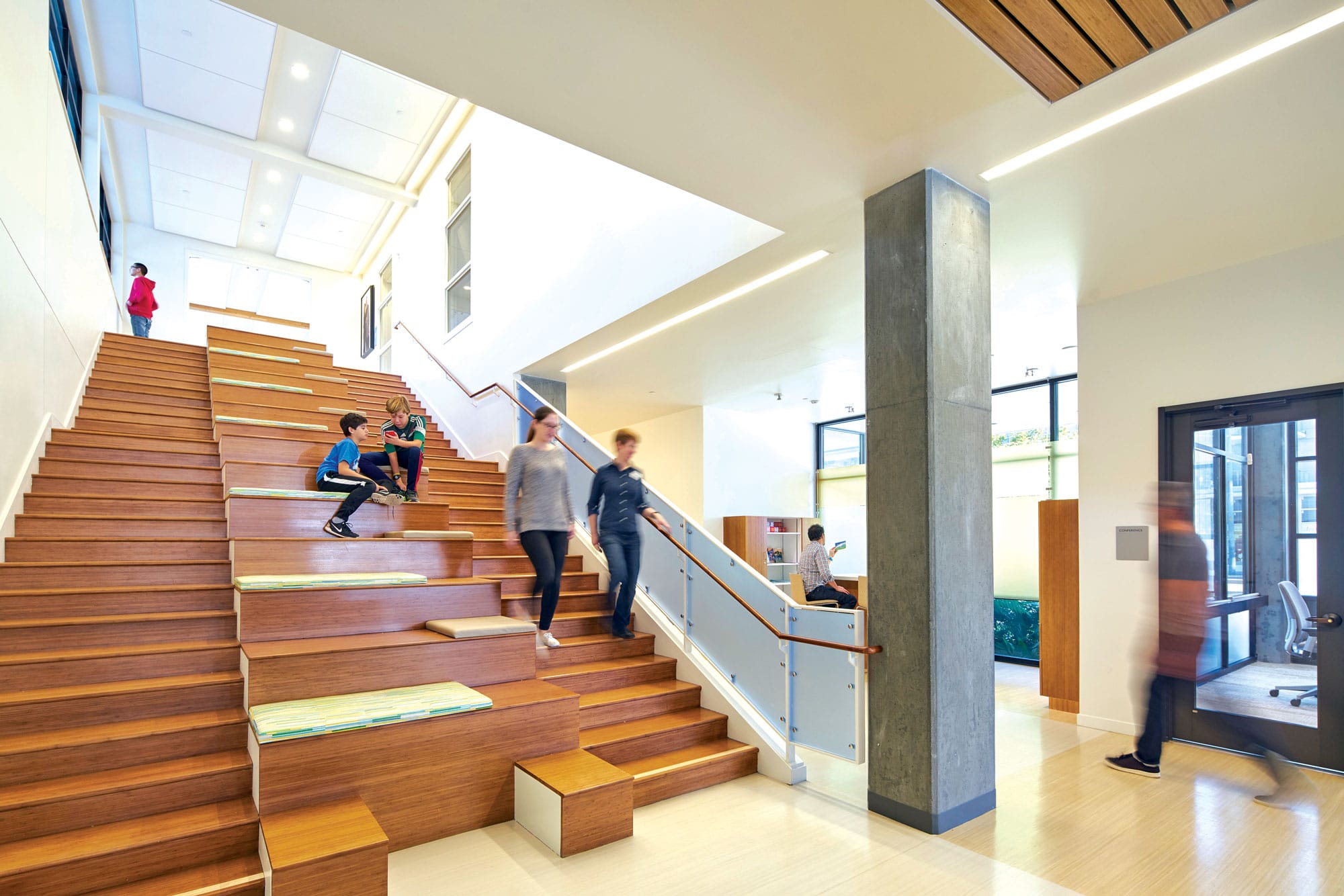Story at a glance:
- The nonprofit Family House in San Francisco offers temporary free housing for low-income families whose children are being treated at UCSF Benioff Children’s Hospital.
- Natural daylight reaches 100% of the public spaces in the LEED Platinum–certified building.
- The outdoor courtyard is perfect for activities like barbecues and sack races.
It’s never easy when families end up with children in the hospital, but having a healthy, encouraging space to spend time at the end of a long day can help to ease the pain. At the nonprofit Family House in San Francisco, up to 80 low-income families whose children are being treated at UCSF Benioff Children’s Hospital for life-threatening illnesses can access temporary, free housing.
Designing the $28 million, 92,000-square-foot project that opened in 2016 was not without its challenges, though—namely making a healthy building feel non-institutional and welcoming. “The families typically spend their days at the hospital and the intention of the building was to provide a comforting home for them to come back to every night that would be completely different than the feel of a hospital,” says Gregg Novicoff, associate principal for Leddy Maytum Stacy Architects.
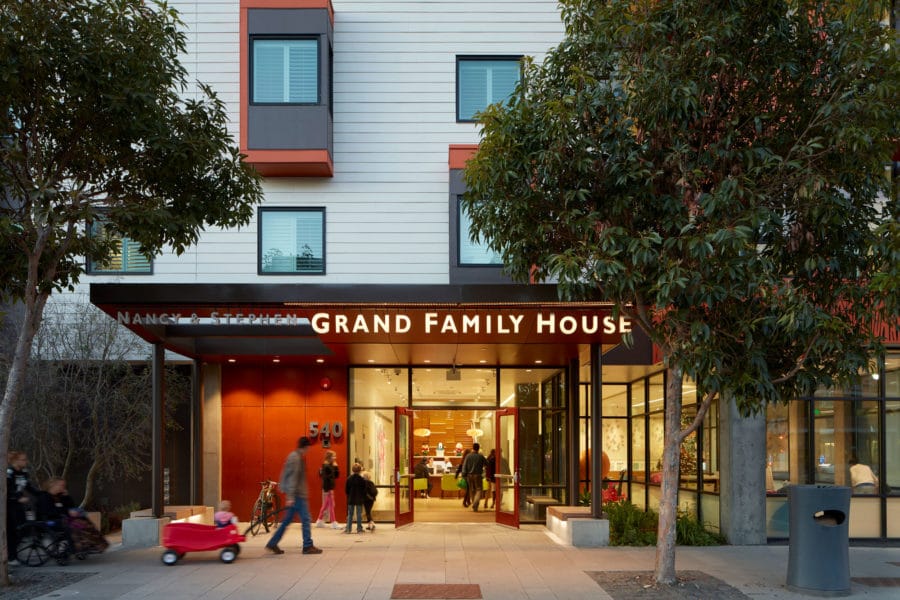
The Family House, completed in 2016, was designed by Leddy Maytum Stacy Architects. Photo by Bruce Damonte
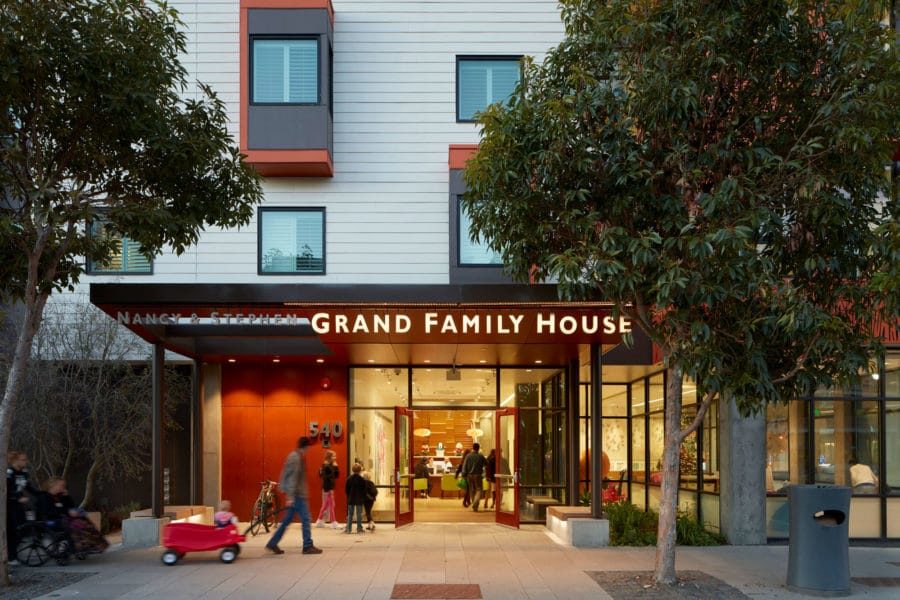
The Family House, completed in 2016, was designed by Leddy Maytum Stacy Architects. Photo by Bruce Damonte
Wellness was key, from the continuous filtered air system that prioritizes healthy indoor air quality to the communal gathering spaces and sunlight flooding in through windows. “Whether there is story time in the lobby, art in the conference room, or a children’s sack race in the courtyard, the architecture supports and provides new opportunities for programs,” Novicoff says. The building was broken down into “neighborhoods” to create smaller groups, each “neighborhood” having 10 guest rooms with shared facilities that encourage families to get to know one another as they go through difficult times.
Of course, shared living is profoundly related to sustainability, Novicoff says. “Instead of building 80 apartments with their own kitchens with refrigerators, sinks, cooktop, and dishwashers, we were able to build eight larger kitchens that could be shared amongst the cluster of families. Sharing resources allows for building less and furthers the building’s goals of creating community—where each of the families might have been making meals in the privacy of their own apartment, now they share in making food cooperatively.”
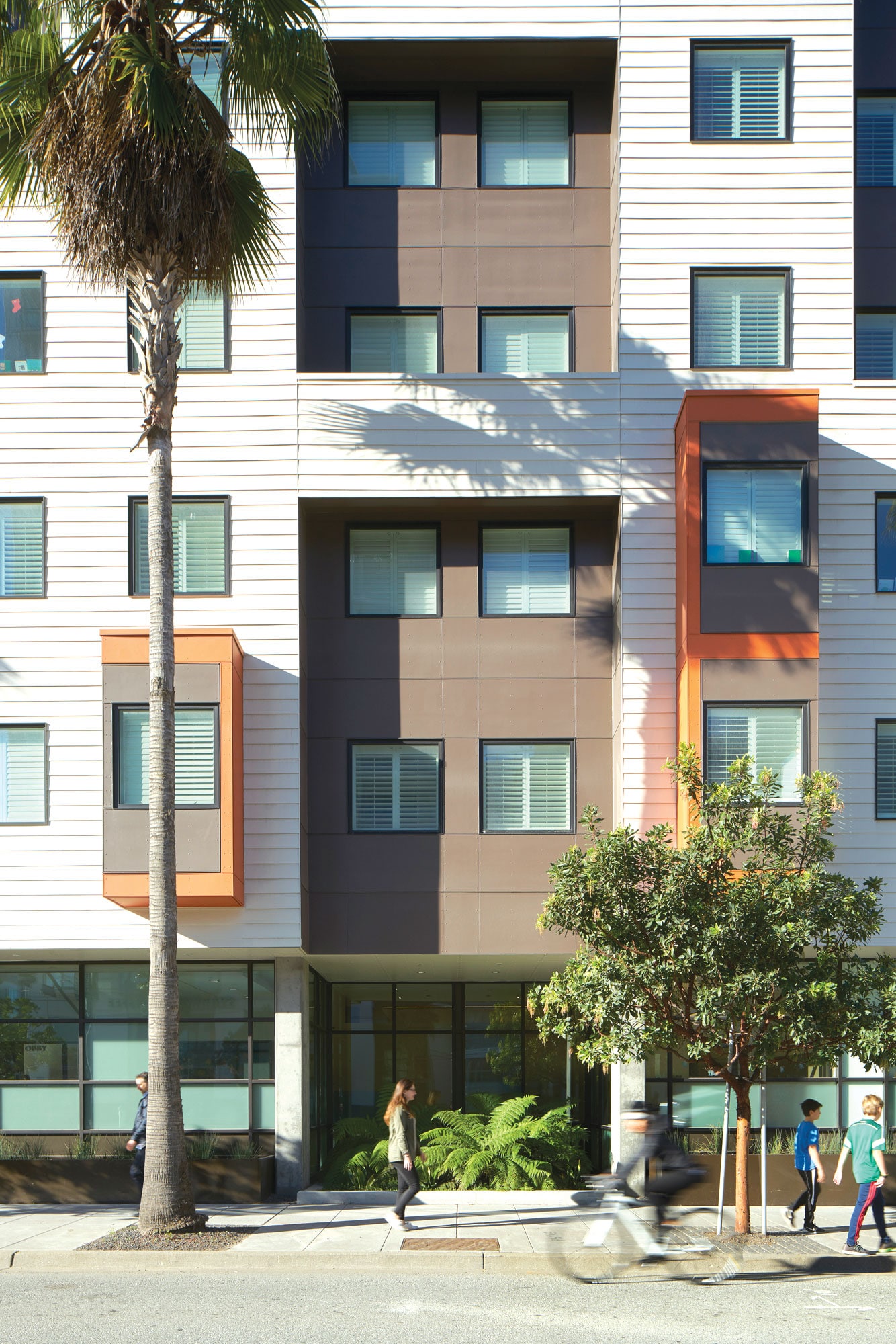
The 80 families staying in the Family House are broken up into eight “neighborhoods,” where kitchen appliances are shared among each group. Photo by Bruce Damonte
Light also plays an important role in people’s health and well-being, and it’s of utmost importance here, where some children might not be able to go outside. A thin floor plate and single loaded corridor brings natural daylight into 100% of the public spaces. In construction, the team used healthy materials with no- or low-VOCs. The LEED Platinum–certified Family House was designed to reduce energy use by 48%. It also incorporates thermally broken windows, motion sensor lighting, Energy Star appliances, a cool roof, solar hot water system, and filtered outdoor air ventilation system, among other sustainable features.
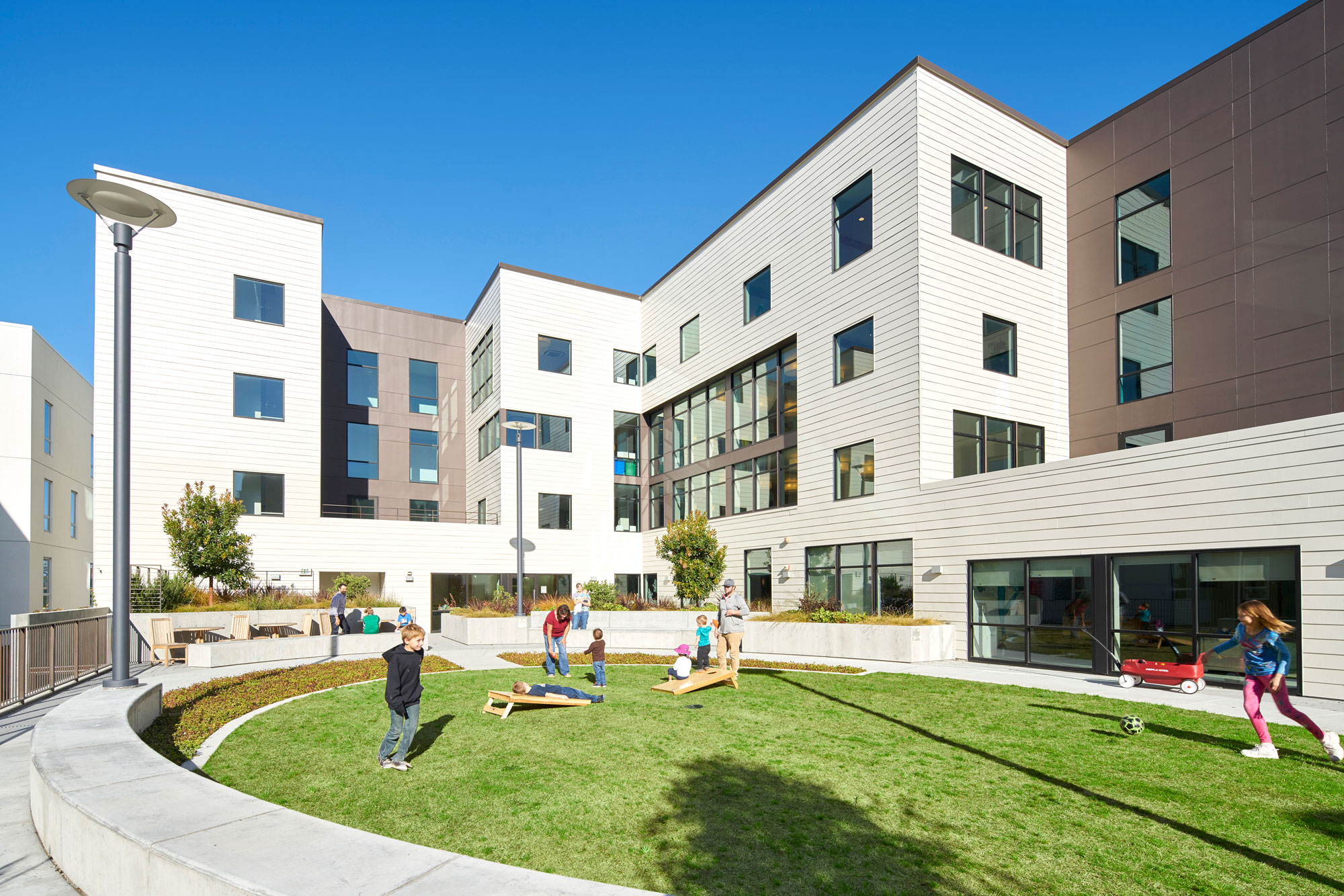
An outdoor courtyard provides a space for kids to play outdoors and gather with their families for special occasions like birthday parties. Photo by Bruce Damonte
Infinity loop courtyard (above)
The courtyard was designed by Cliff Lowe and Associates to create space for activities like barbecues and sack races and even small family birthday parties. The spaces were organized around an infinity loop to allow kids to run and play endlessly.
Bleacher staircase
“The bleacher staircase came about from our goal to maximize connections to daylight and the outdoors,” Novicoff says. “This was connecting the second level landscape courtyard with the first floor lobby and bringing natural daylight into the center of the lobby.” The staircase provides an immediate connection between the teen room, gym, music room, and lobby spaces. It also serves as a gathering space for kids to hang out.
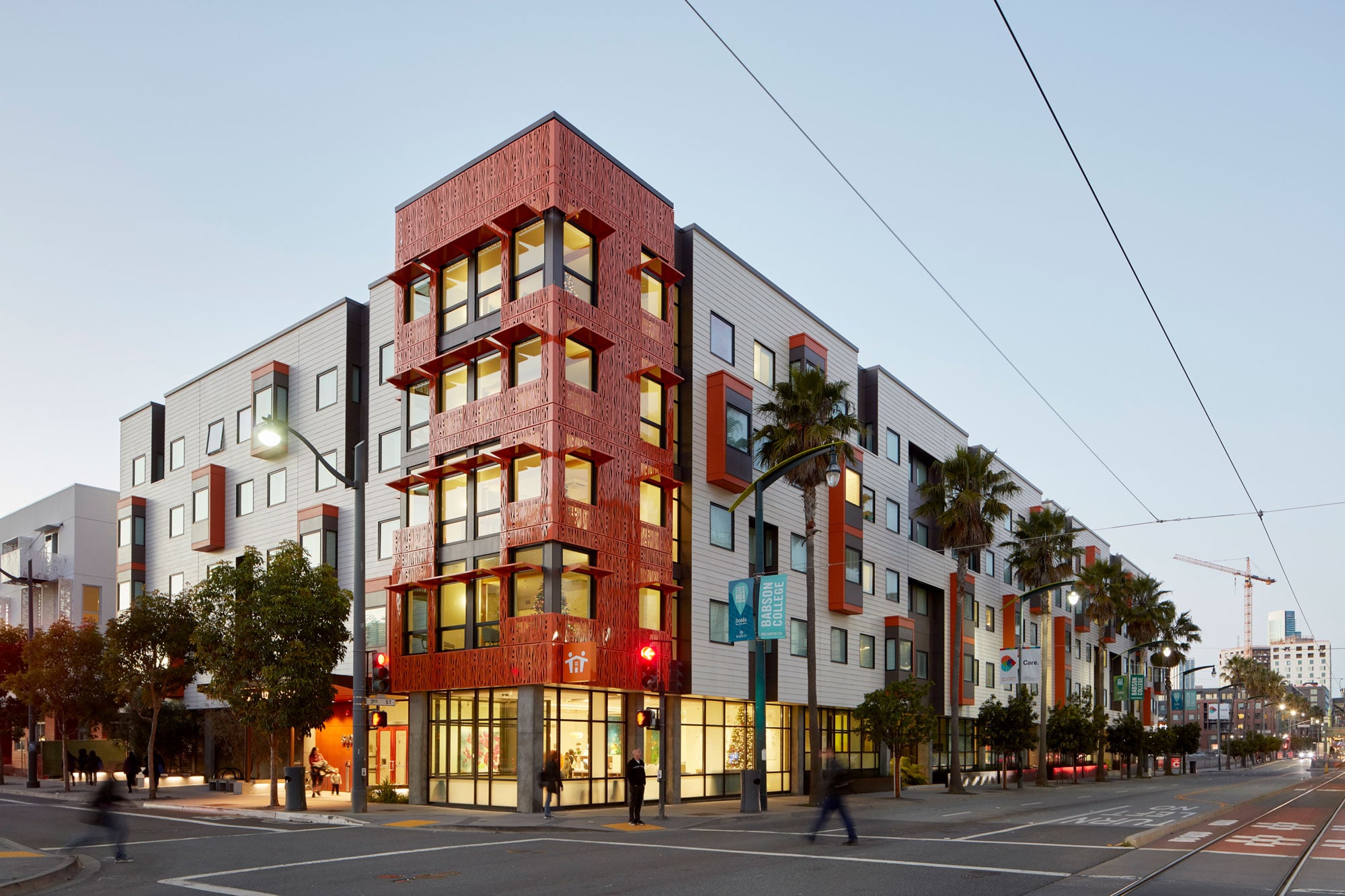
The Family House incorporates thermally broken windows and motion sensor lighting, among other sustainable features. Photo by Bruce Damonte
Subsurface drip irrigation
Low-pressure, high efficiency irrigation system that uses buried drip tubes or drip tape. Family House includes this system on its green roofs to deliver water to the plants (including California native and adapted species that support wildlife and daylilies that provide nectar for hummingbirds), all but eliminating the loss of water through evaporation.

